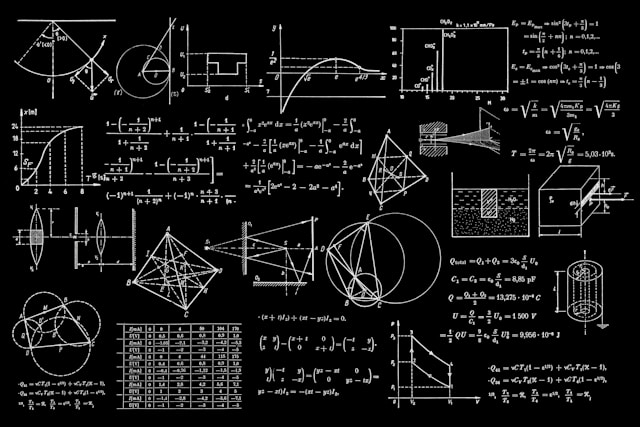Perfect numbers have intrigued mathematicians for centuries. Their simple definition and complex properties have made them a subject of study for more than 2000 years. Early scholars observed that a perfect number is one where the sum of its proper divisors equals the number itself. For example, six is perfect because 1, 2, and 3 add up to six. Other known perfect numbers include 28, 496, and 8,128.
Definition and Examples
A perfect number is defined as a positive integer that is equal to the sum of its proper divisors. Proper divisors exclude the number itself. The first few perfect numbers have been known since ancient times. Some examples are:
- 6: Its divisors are 1, 2, and 3. Their sum is 6.
- 28: Its divisors are 1, 2, 4, 7, and 14. Their sum is 28.
- 496: When all proper divisors are added, the total is 496.
- 8,128: Similarly, the proper divisors add to 8,128.
A neat pattern appears when these numbers are written in binary. For instance, 6 becomes 110, 28 becomes 11100, and 496 becomes 111110000. This pattern shows a string of ones followed by zeros, a result of their relation to powers of two.
Euclid’s Formulation
Euclid discovered a method to generate even perfect numbers using prime numbers. If one takes a prime number ppp and finds that 2p−12^p - 12p−1 is also prime, then the formula
N=2p−1×(2p−1)N = 2^{p-1} \times (2^p - 1)N=2p−1×(2p−1)
produces an even perfect number. The numbers 2p−12^p - 12p−1 are known as Mersenne primes. The table below summarises the relationship between the value of ppp, the corresponding Mersenne prime, and the resulting perfect number.
| ppp | Mersenne Prime (2p−12^p - 12p−1) | Perfect Number (2p−1×(2p−1)2^{p-1} \times (2^p - 1)2p−1×(2p−1)) |
| 2 | 3 | 6 |
| 3 | 7 | 28 |
| 5 | 31 | 496 |
| 7 | 127 | 8,128 |
Historical Perspectives
Early Discoveries
The ancient Greeks knew of perfect numbers. They found only a few, such as 6 and 28. In those early days, scholars believed that there might be a simple pattern to these numbers. Nicomachus, a Greek philosopher, even proposed several conjectures about perfect numbers. He thought that every perfect number had a fixed number of digits, that they alternated in their ending digits, and that Euclid’s formula produced all even perfect numbers. Over time, some of his ideas were disproved when more numbers were discovered.
Contributions from Renaissance to Modern Times
In the 17th century, mathematicians like Descartes and Fermat renewed interest in perfect numbers. Descartes suggested that any odd perfect number, if it existed, would have to follow a specific form. Later, Leonhard Euler made significant progress. He proved that all even perfect numbers must have the Euclid form. Euler also explored the possibility of odd perfect numbers, though he did not resolve the problem.
Many great minds have contributed to the study of perfect numbers. Some of these are:
- Euclid – Established the method to generate even perfect numbers.
- Nicomachus – Proposed early conjectures about the properties of perfect numbers.
- Descartes – Studied the structure of perfect numbers and their possible forms.
- Euler – Proved that even perfect numbers must follow Euclid’s pattern and set conditions for odd perfect numbers.
- Mersenne – Investigated primes of the form 2p−12^p - 12p−1, now known as Mersenne primes.
Mathematical Insights
The Sigma Function
Leonhard Euler introduced the sigma function, a tool that sums a number's divisors. For a perfect number NNN, the sigma function satisfies:
σ(N)=2N\sigma(N) = 2Nσ(N)=2N
For instance, if one takes the number 6, its divisors are 1, 2, 3, and 6. Their sum equals 12, which is twice 6. This relationship holds for every perfect number. The sigma function is particularly useful when a number is expressed as a product of prime powers. Euler used it to prove that every even perfect number has the Euclidean form.
Conditions for Odd Perfect Numbers
Despite much effort, no odd perfect numbers have been found. Mathematicians have derived many conditions that any odd perfect number must satisfy. Some of these conditions are:
- The number must be odd.
- It must have a unique prime factor raised to an odd power.
- All other prime factors must be raised to even powers.
- The number must exceed very large lower bounds. Recent work has shown that if an odd perfect number exists, it must be larger than 102,20010^{2,200}102,200.
Researchers have also studied numbers that nearly meet these conditions, known as spoofs. Spoofs share many properties with odd perfect numbers but ultimately fail to be perfect. By examining these near misses, mathematicians hope to show that an odd perfect number cannot exist.
Modern Approaches and Computational Advances
The search for perfect numbers has advanced considerably with the aid of computers. In the 20th century, computer programmes were developed to check large numbers for the properties of Mersenne primes. One notable project is the Great Internet Mersenne Prime Search (GIMPS). This project distributes the work among many computers and has led to the discovery of several new Mersenne primes. Such discoveries have pushed the known perfect numbers to new heights.

